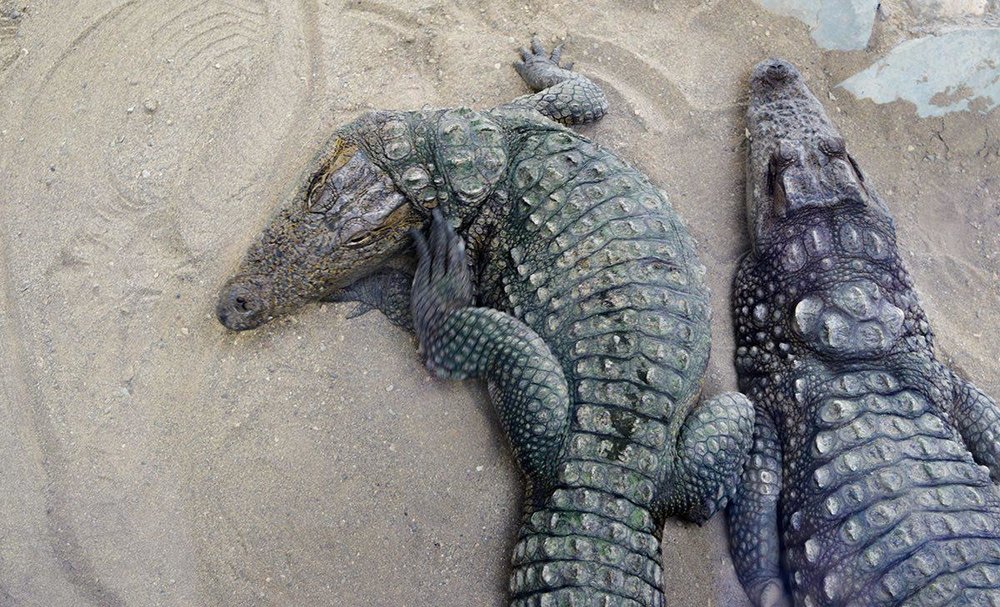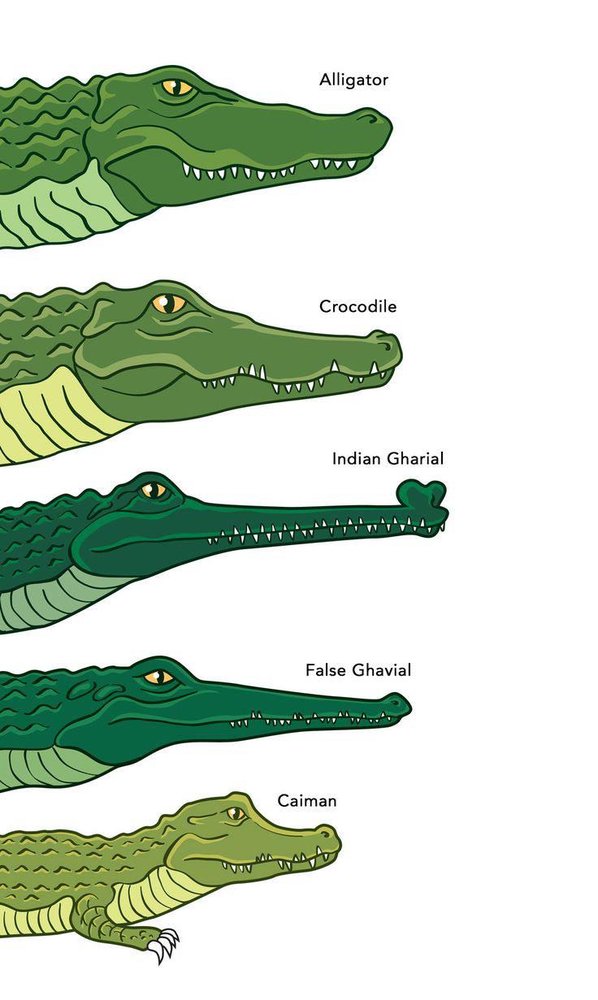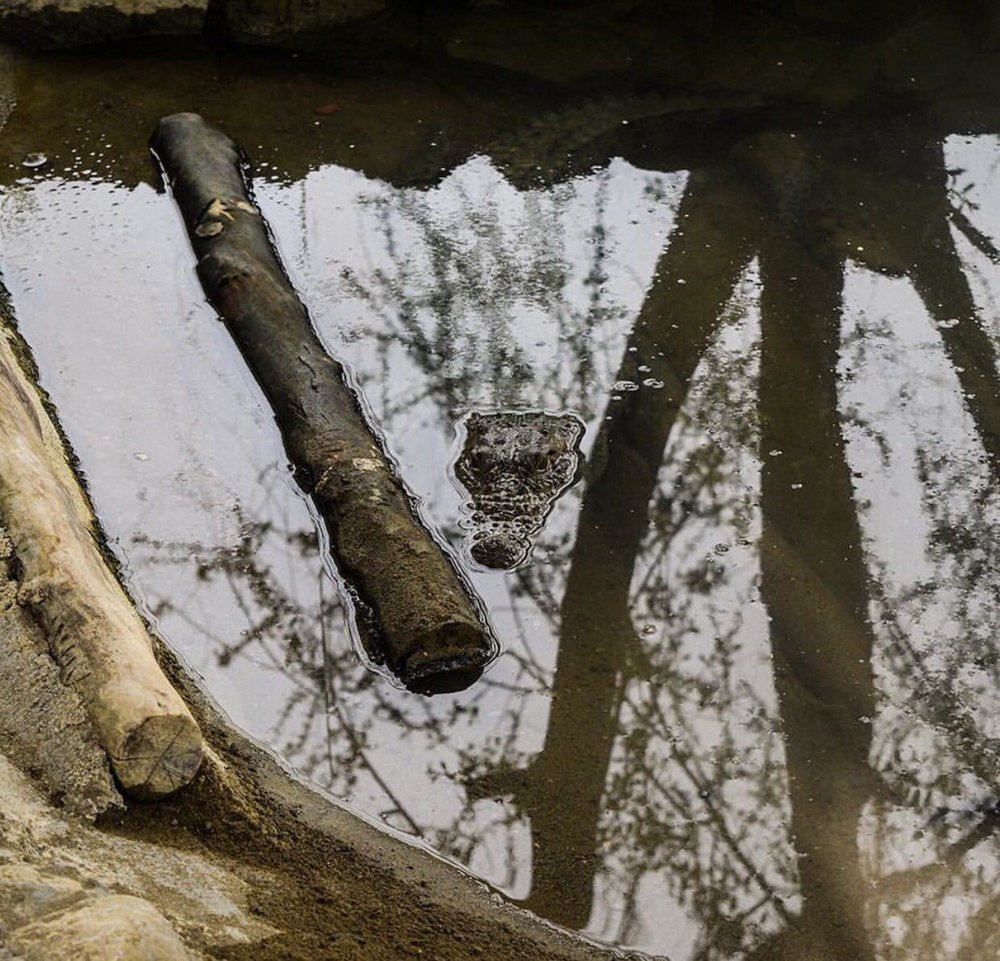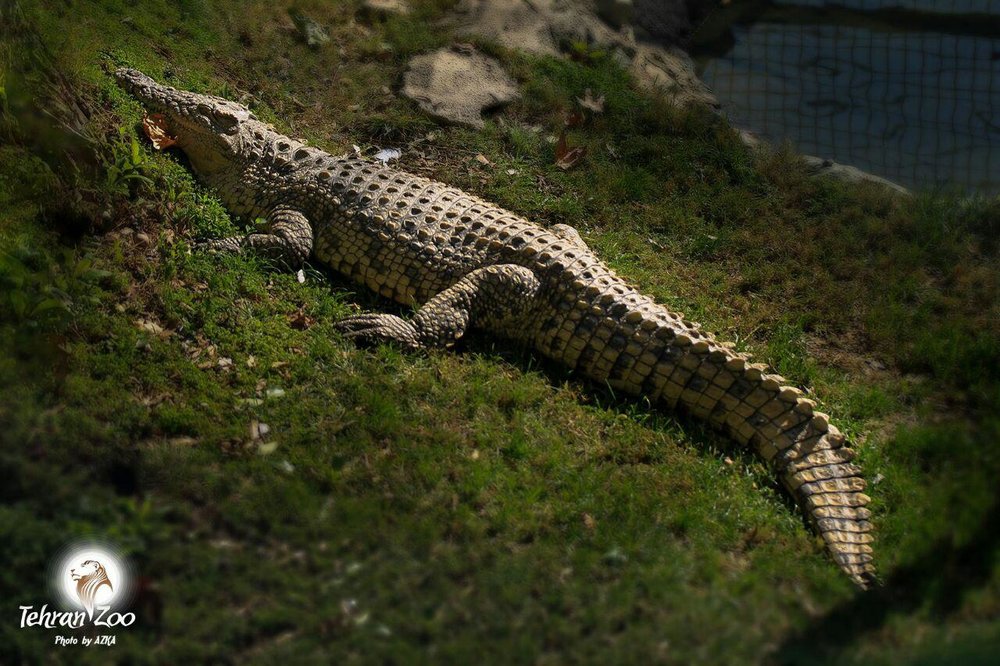Mugger crocodile as a wild beast

The beautiful broad-snouted Crocodile kept at Tehran Zoo is a vulnerable species and also known as Mugger. The snout of this Mugger has expanded, this head-on view allows the crocodile to grasp its prey without getting any attention. Drought and also habitat destruction led to their population decline. Some individuals survive today primarily in captivity. Lack of awareness about their place in the web of life were pushed species such as Muggers to the brink of extinction.
Beasts of prey
Alligators, caimans, crocodiles, and gharials are jointly referred to as crocodilians. The crocodilians are holdovers, survivors of that long-ago time known as the Age of Reptiles, a time when the dinosaurs were the ruling creatures on the Earth, dating from 265 million years ago to roughly 66 million years ago. All four forms of crocodilians- alligators, caimans, crocodiles, and gharials- basically resemble each other. The alligator has a broad, rounded, shovel-like snout while the gharial’s snout is long and very narrow. The snouts of caimans and crocodiles are between these two extremes, although a long, tapered snout is most common.

Crocodiles show their upper and lower teeth when mouth shut also it defines with “pinch” on upper snout. Alligators only show their upper teeth when mouth is closed and there is no pinch on upper snout. But the caimans have pointy eye ridge and snout pinch together that distinguishes them from crocodiles and gators. Alligators have smooth curve of the snout but crocodiles have more rugous head than gators. Also crocodiles have “V” shape head although alligators have “U” shaped head. All crocodilians have both their nose and their eyes located on the top of the skull so that they can see and breathe while the rest of their body is submerged beneath the water.
Iran native crocodile
Mugger is a Marsh Crocodile who lives in eastern Iran, India, Bangladesh, Pakistan, Nepal, and also Sri Lanka. Some assessments pointed to the possibility of Mugger extinction in Bangladesh, there is also records about regional extinction of Muggers in Bhutan, Myanmar. International Union for Conservation of Nature and Natural Resources (IUCN) pinpointed this species is known to occur to 420 m above sea level.

Almost half of all of crocodilian species are endangered, even though there is much less hunting today than in the past. Today, the loss of habitat is a greater threat than hunting for most crocodiles especially for Muggers. Drought, extending of human activities and loss of habitat are the main threats for Muggers in Sistan and Baluchestan Province. Muggers are not properly protected in their habitats and there are not enough Muggers being reared to make sure this species does not disappear forever. Mugger crocodile has the small range and is vulnerable in Iran. The effects of drought has drastically reduced the habitat of Muggers, so human conflicts raised. Muggers have also moved into artificial canals and rivers where it is more in danger from humans. Some of them strayed into artificial ponds where humans are present. One of the biggest problems for Muggers is the fact that more and more people want to live in the same places that they do.

According to IUCN “Muggers are known from the drainages, small dams, artificial ponds and the natural ponds along the Sarbaz and Kajou Rivers, which join together to form the Bahokalat River in Sistan and Baluchestan Provinces close to the Pakistan border. Recent surveys in the Nahang River area along the Pakistan border suggest that C. palustris is more widely distributed than previously considered.”
Preferences
Most crocodilians live in fresh water, but a few venture into estuaries (the mouths of rivers), coastal swamps or the sea. Muggers live in freshwater habitats consist of rivers, lakes, reservoirs, hill streams, village ponds and manmade tanks. But some species such as Nile crocodile (as you can see also in the pictures) have been found in saltwater habitats. Although they typically live in rivers, Nile crocodiles also inhabit salty estuaries and mangrove swamps. Crocodiles have up to 40 salt glands on the tongue. These special salivary glands allow the crocodile to get rid of excess salt without losing too much water. These glands are necessary because crocodiles have kidneys that need plenty of fresh water to flush out the salt.

Living with people
Many people only ever see a crocodile or an alligator in a story book, on the Television or at the cinema. These crocodilians are often huge, fierce monsters that attack and eat humans. Such images have given crocodilians a bad reputation. Just a few large crocodiles e.g. Nile and saltwater species, can be very dangerous, but most such as Muggers are timid creatures that are no threat to humans. Bahoukalat people believe that Muggers bring abundance and bounty so in their habitat you may have a close-up view. Attacks out of the water are unlikely- the element of surprise is lost because most of them cannot move fast on the land. But some meetings are harmful especially for children.
